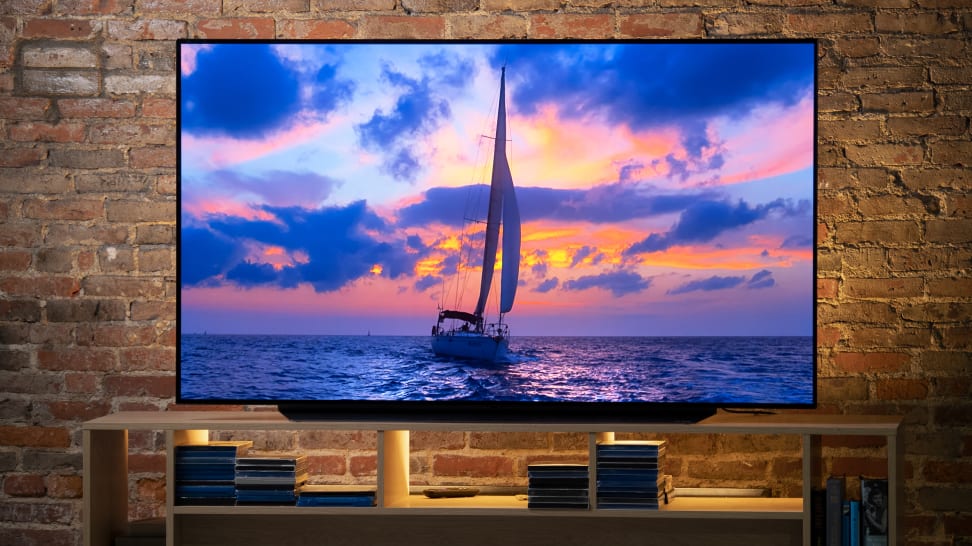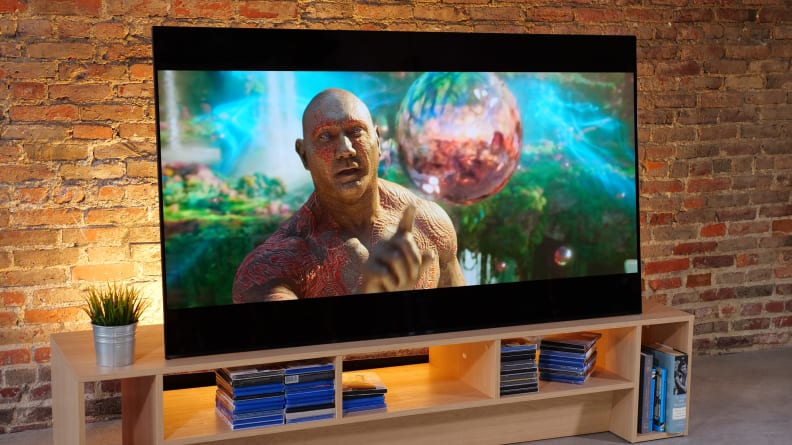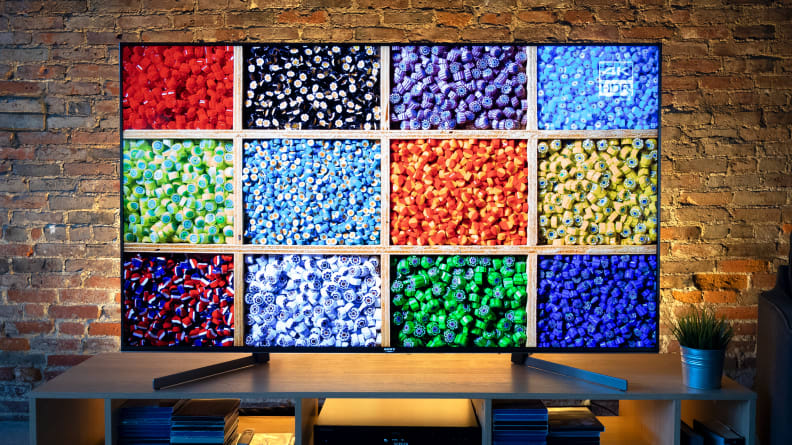 Credit:
Reviewed / Michael Desjardin
Credit:
Reviewed / Michael Desjardin
Products are chosen independently by our editors. Purchases made through our links may earn us a commission.
If you've had your antenna tuned to the TV world in recent years, you've almost certainly heard about OLEDs—they're considered by most to be the best TVs money can buy. If you take a stroll through the showroom of your local Best Buy, there's a good chance you'll walk away with that opinion, too. LG, Sony, and Panasonic are among the companies currently manufacturing OLED TVs for consumers across the globe, and as the tech steadily declines in cost, more folks are finding them to be financially feasible.
Technology, however, moves at the speed of light, and industry-leading products can find themselves replaced on the podium overnight. In addition, we often lose sight of the fact that there's more than one way a product can be great—depending on a person's wants and needs, the so-called "best" product of its category might not be a good fit.
So what about OLED? What is it about this technology's strengths that makes its superiority so unanimously upheld? Is there anything on the horizon—or here right now, for that matter—that could possibly topple it? Let's break it all down.
What makes OLED TVs so good?

The chief advantage that OLED TVs have over traditional LCD TVs is their ability to produce near-perfect black levels—the level of contrast makes for an incredibly vibrant image.
OLED (which stands for organic light-emitting diode) is a relatively new type of display technology that offers some serious advantages over traditional LCD displays. The most significant difference between OLED and LCD/LED TVs is that each individual pixel on an OLED turns on and off independently of one another, while most LCD TVs rely on a backlight for illumination. This means that OLED TVs, for instance, offer deeper, richer black levels and, as a result, superb overall contrast.
To visualize this, consider a movie or TV show's depiction of a starry night: While traditional edge-lit panels need to flood the entire night sky with dim light in order to produce each twinkling dot, an OLED panel renders each star with pinpoints of bright, concentrated light consisting of a few self-illuminated pixels. The surrounding night sky, therefore, is free to be as inky-black as the content creator's originally intended.
When it comes to contrast (the cornerstone of a display's overall performance), OLED TVs lead the pack, but the self-illuminating nature of these marvelous panels doesn't just help with contrast; these TVs handle motion incredibly smoothly, too, and their vibrant color production is rivaled only by quantum-dot LED displays .
What are some drawbacks to OLED TVs?
Currently, while HDR-enabled OLED TVs are capable of getting very, very bright, they haven't quite reached the dizzying heights of some of their high-end, non-OLED competitors.
Take, for instance, the LG C9, our top-rated TV at the time that this article was published. We clocked the C9's peak brightness somewhere between 700 and 800 nits, which is sensational once you factor in the C9's OLED-powered black levels, but not nearly as bright as something like the Vizio P-Series Quantum X, which we measured close to 3,000 nits.
Both of these 2019 TVs offer ridiculously impressive contrast and stellar overall performance, but only one of them is well-equipped for a brightly lit room. To be clear, it's not that the LG C9 will look bad in a bright room, it just won't have nearly as much oomph.
And then there's the cost: While the cost of OLED TVs has come down in recent years, the tech still carries a hefty price tag. In addition to getting three times as bright as the LG C9, the Vizio P-Series Quantum X also costs less.
While I find it hard to argue that OLED TVs aren't pound-for-pound the best in the game right now, I don't think it's necessarily the best option for everyone.
What should I get instead of an OLED TV?

You still have to pay a premium for an LED TV that rivals an OLED TV, but it'll likely cost significantly less.
You can still get a premium TV with an incredible picture without shouldering cost of an OLED—you just need to know what to look for.
For starters, any LCD TV that comes close to an OLED's contrast will likely be getting very bright, so consider TVs known for their brightness. TVs that feature quantum dot technology (see: Samsung QLEDs and Vizio Quantum TVs) are a good place to start, since quantum-dot displays typically offer bright, vibrant pictures whose colors look just as good—and sometimes better—than an OLED's colors.
Here's the bottom line: We still think that OLED TVs are, pound for pound, the best you can buy, but they're not for everyone, and some of the most exciting TVs in the industry aren't OLED TVs.
That said, if you want OLED-level performance, you'll still have to pay a premium for an OLED alternative.
